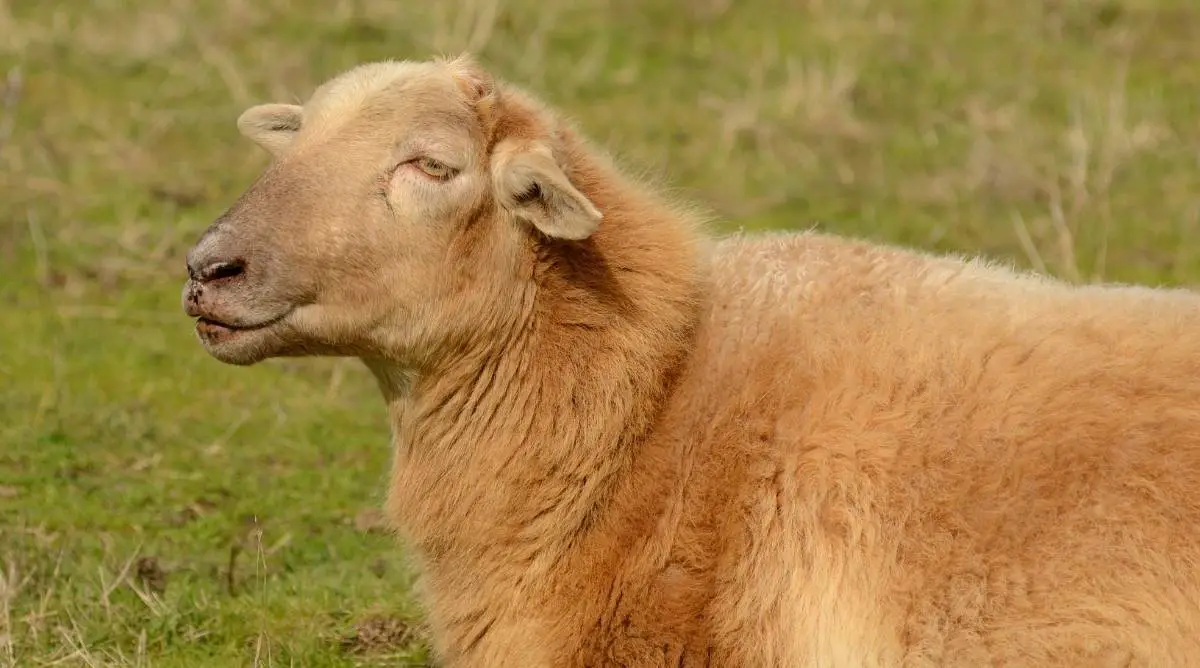Tunis sheep are a large meat breed originating in Tunisia in North Africa. They are excellent grazers and have become prominent in the sustainable agriculture movement as a low-impact method for landscape management.
Table of Contents
History of Tunis Sheep
Tunis sheep are an ancient sheep breed from Tunisia in North Africa. The breed came to the United States as a gift from the monarch of Tunis to George Washington in 1799.
George Washington entrusted the pair to Richard Peters of Belmont, Pennsylvania. Tunis sheep spread to Maryland, Georgia, North and South Carolina, and Virginia through the judge’s efforts.
Tunis sheep were almost eradicated in the United States during the Civil War. Maynard Spiegener hid the last remaining American flock of Tunis sheep along the Congaree River in South Carolina.
The modern American Tunis breed was developed from the original pair’s descendants and from other imported fat-tailed sheep. Today, the American Tunis is considered one of the oldest sheep breeds indigenous to the US.
Tunis Sheep Characteristics
| Characteristics | Description |
| Origin | Tunisia |
| Appearance | Large, fat-tailed sheep. Adults have red faces and legs and white-colored coats and wool-free heads and legs. Both ewes and rams are polled. |
| Wool | Lustrous. Fiber fineness of 24-30 microns. Staple length of 4-6 inches. USDA wool grade of 50-58. Lamb wool is reddish. Adult fleece is creamy white. Can yield up to 30 pounds of wool a year. |
| Weight | 175-225 pounds (Rams), 130-160 pounds (Ewes) |
| Meat | Excellent meat-to-bone ratio. Tender, flavorful, mild-tasting. Little fat content. |
| Environment | Most climates. Can thrive as grazers in relatively infertile environments. |
| Common uses | Mainly for meat. Also used for milk production, wool production, leather, and landscape management. |
| Fertility | Tunis ewes can produce fall lambs and can breed out of season. Ewes are known for producing twins. |
Tunis sheep are a large breed used mainly for meat, but also for milk production and wool production. Rams weight 175-225 pounds, while ewes weigh 130-160 pounds.
Adults have reddish faces and legs along with white-colored coats. Lambs have a reddish coat that turns white as they mature.
Tunis sheep have wool-free heads and legs, and both ewes and rams are polled. Tunis tails are fat, like most other African sheep breeds.
Tunis sheep wool is lustrous, with a fiber fineness of 24-30 microns and a USDA wool grade of 50-58. Staple length is long, at 4-6 inches. Tunis sheep can yield up to 30 pounds of wool a year.
Fertility of Tunis Sheep
Tunis sheep are prolific breeders. The ewes can and usually breed out of season and can produce lambs in the fall.
Tunis ewes have a strong mothering instinct and are known for having twins. They are heavy milkers, producing ample milk for their lambs. Extra milk is often used for drinking and making cheese.
Tunis ewes can start breeding at 18 months of age, and rams can start breeding after a year. One ram can cover 5-10 ewes in a season.
Tunis Sheep Meat Production
Tunis sheep are primarily a meat breed. Their carcasses are high-quality, with excellent meat-to-bone ratio and low fat content.
The meat is tender, full-flavored, and mild-tasting, without a strong mutton or gamey taste.
Leather and Wool Production
Tunis sheepskin is of good quality and is often used for garments, and leather goods for furniture.
Some of the goods produced from Tunis sheepskin include:
- Leather shoes, coats, gloves
- Leather chairs and other furniture
Tunis sheep can produce leather from age 3-10 months. For normal leather, Tunis should be at least a year old.
Tunis wool is lustrous and good quality. It is used to produce clothes, blankets, and other knitted materials.
Grazing Pattern
Tunis sheep are excellent grazers and thrive even on marginal land with poor soil and little industrial or agricultural value.
Tunis sheep have become a prominent part of sustainable agricultural practices. Farmers use them for landscape management. Herds of Tunis can graze on farmland and eliminate unwanted weeds and other invasive plant species.
Tunis Sheep Facts
- Tunis sheep are a hardy breed and can tolerate both cold and warm climates.
- Their characteristic fat tails come from the breed’s African heritage, where water sources were scarce.
- Tunis sheep are docile and friendly. They are easy to manage, and can mostly look after themselves.
- Tunis sheep have resistance to most livestock diseases.

